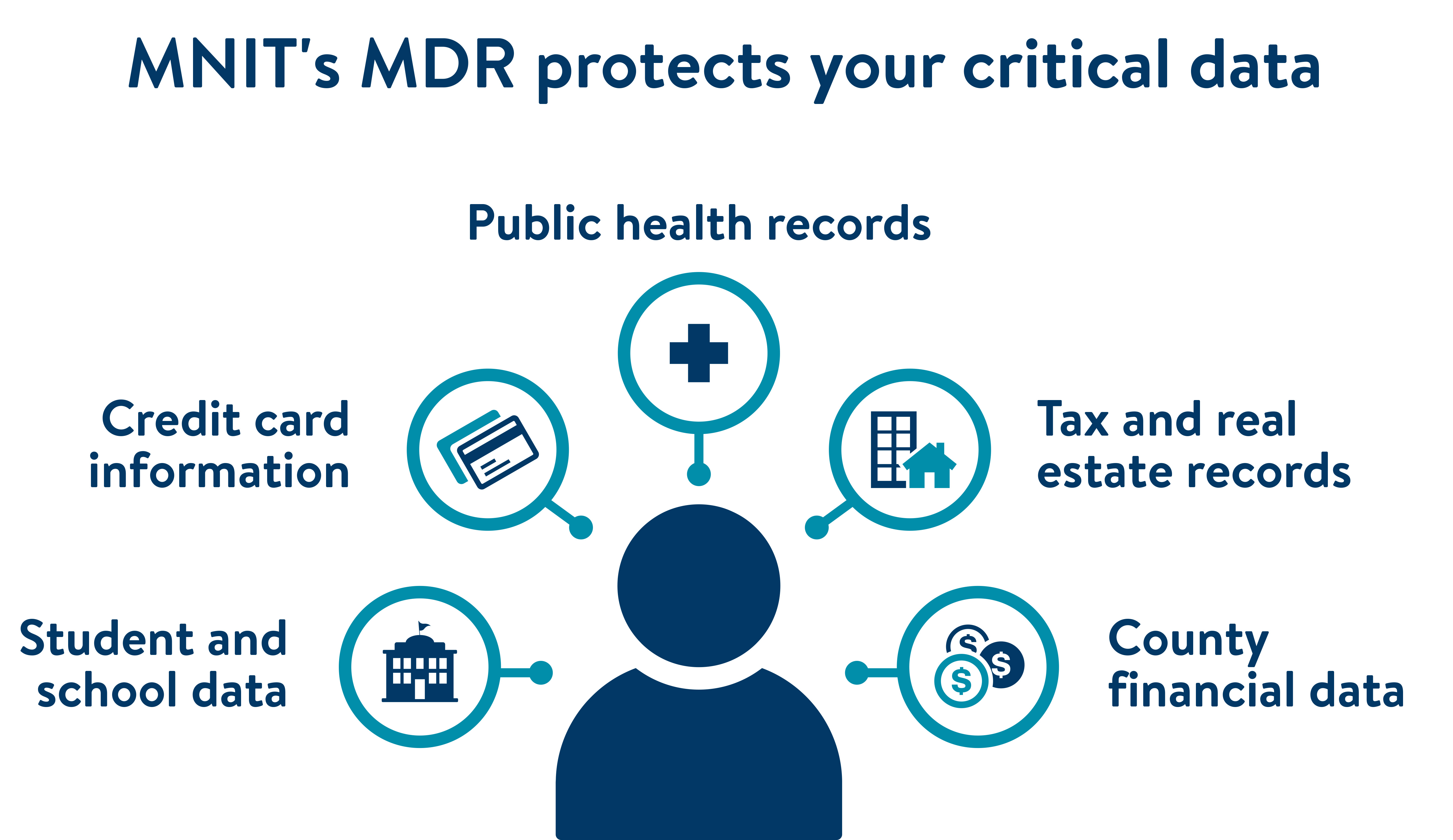4/25/2025 9:24:38 AM

Minnesota’s Managed Detection and Response (MDR) service for local government entities has reached a major milestone. More than 200 counties, cities, schools, and Tribal Nations in Minnesota now use our MDR service, which protects over 55,000 endpoints—the computers and servers storing Minnesotans’ sensitive data.
And the number of participating entities continues to grow.
That means the private data of millions of Minnesotans, from public health records to credit card numbers, is better protected from evolving cyber threats. This achievement highlights the value of Minnesota’s statewide approach to cybersecurity, which guards our communities, schools, and public institutions against cyber threats.
As cyber threats evolve and become more pervasive, maintaining a strong cyber defense will help keep data and systems safe. However, local governments often lack the resources to monitor and respond to these threats effectively. MDR provides 24/7, year-round active monitoring and response to mitigate cyber threats. By offering a cost-effective, grant-funded solution that keep costs low for local entities, MDR keeps essential services running smoothly and protects Minnesotans' data.
This milestone reflects a growing commitment to cybersecurity collaboration. MNIT’s Cyber Navigator team provides participating entities with tailored assistance, making it easier for them to deploy and manage MDR with minimal effort. As the number of participating organizations grows, so does the strength of Minnesota’s cyber resiliency.
For Minnesota’s local governments, MDR is more than just a security tool—it’s peace of mind. Reduced costs and expert-backed protection mean fewer interruptions. And local governments work confidently knowing their data and information are secure and accurate.
MDR provides many levels of protection. On the large-scale, MDR protects local governments, K-12 schools and our state’s critical infrastructure such as water and wastewater facilities. It protects the confidentiality and integrity of sensitive data like property records, criminal justice files, and water system details, and all of the other critical services local governments provide everyday.

On a more personal level, MDR safeguards the critical information that matters most to individual Minnesotans: health records, tax information, education data, and more.

By preventing cyber threats like ransomware and data breaches, MDR helps ensure essential state services stay online and secure. It protects not only the confidentiality of data but also its integrity and availability.
In 2024, our Security Operations Center (SOC) detected or received reports of 5,224 cyber incidents across our state's executive branch. Among these, malicious software (malware) was the most reported security incident type with 3,672 cases.
This demonstrates why MDR is such an essential program that proactively detects and mitigates cyber threats before they cause significant harm, preventing potential data loss and service disruption.
By constantly monitoring cyber threats and detecting them early, the MDR tool has created a more secure digital environment for millions of Minnesotans, fostering trust in the digital services they rely on every day.
Cybersecurity
Data Systems
Digital Government
Cybersecurity
Digital Government
Data